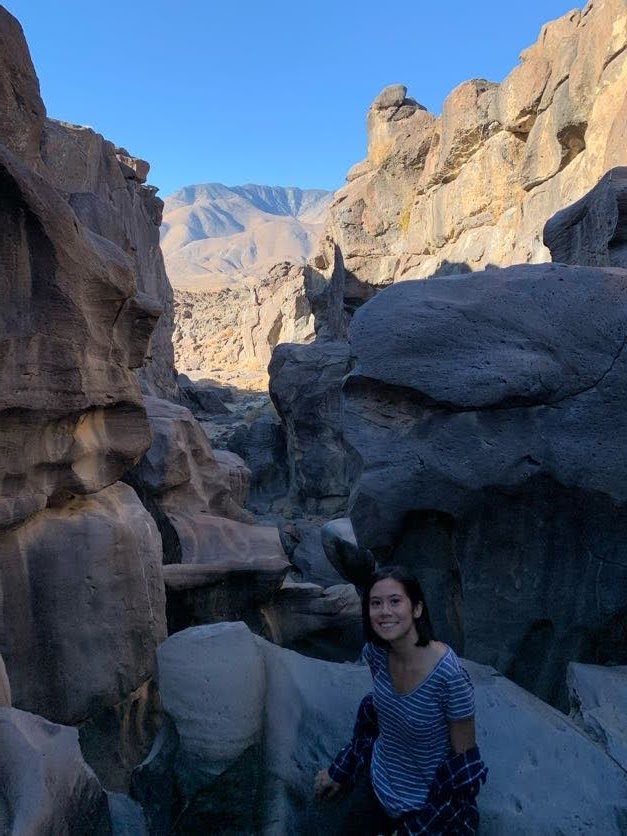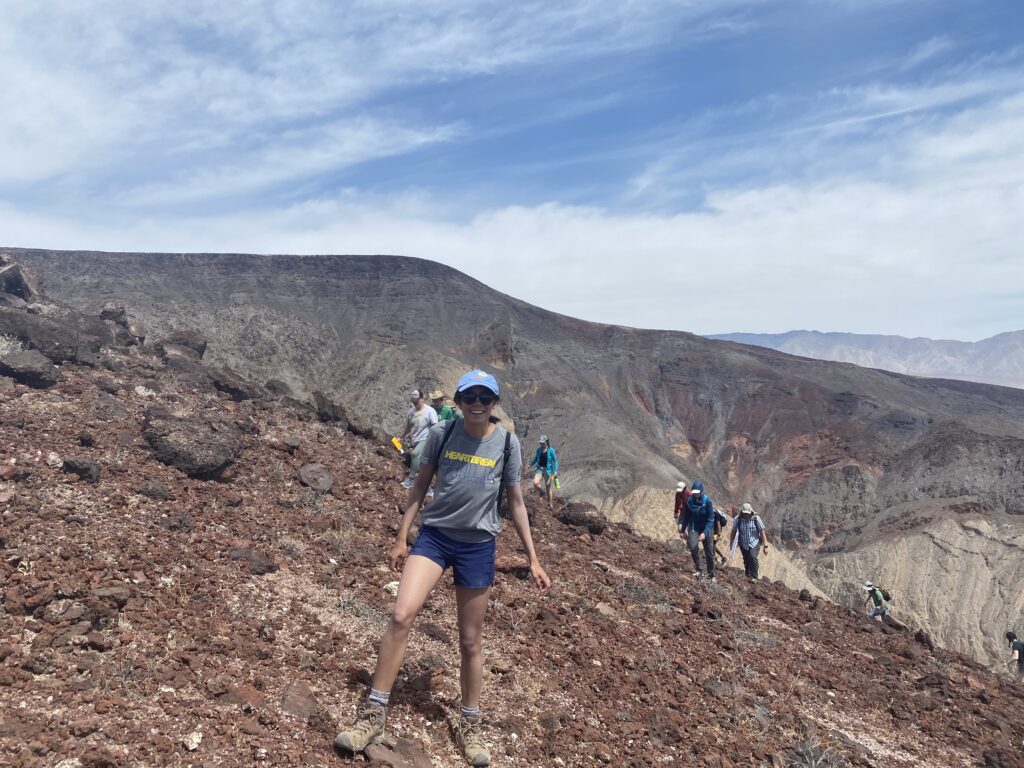

This summer we’re introducing interns in the RESESS, Geo-Launchpad, and USIP programs to shine a spotlight on the research projects they are completing throughout these 11-week internships and on their interests in geoscience.
Elise Boucher currently attends Pitzer College in California and is double majoring in Geology and English. Her interest in geology began when she took an honors geology course in high school, with her interest in the subject stemming from the way geology covers a broad range of topics and explains natural phenomena at their most basic level. Elise’s previous research experience includes a summer REU with the Keck Geology Consortium through Oberlin College, where Elise worked with a larger group of researchers finding formation pressure and temperatures of Adirondack metamorphic rocks . Elise is now excited to work on an independent project, improving her skills working on her own.
Working with her mentor, Dr. Brendan Crowell at the University of Washington, Elise is examining slow slip events in the Cascades. Slow slip events on faults disperse their energy over a period of hours, days, or even months. However, a unique phenomenon in the Cascades is that following roughly 14 months of these slow slips, which slip at a rate of a few millimeters per day to a few millimeters per year, a reversal of the tectonic motion occurs accompanied by tremors. This reversal movement is 2–4 mm and lasts 8–15 days and which is factored into the overall 25 mm forward movement in the Northern Cascades.
Currently, Elise is utilizing satellite seismology to observe a vast network of GPS stations, and analyzing station movement to help understand the slow slip movement within the day. Slow slip is usually studied on a larger scale of days and months, so Elise’s work will provide important insight into plate movement occurring on a sub-daily scale. This research will also provide insight into the complex physics of rocks at depth, such as varying fluids and rock characteristics, and the response to friction and strain in the subduction zone. Since the Northern Cascades is an area prone to megathrust earthquakes, further research and study into this tremor and slip movement helps give researchers a better understanding of earthquake generation and stress release in an active subduction zone.
Q&A
- What has been your favorite part of the RESESS program so far?
I like getting to know the other interns, we all come from different backgrounds with different interests, and we’re all united in a passion for geology. It’s really great meeting people who feel similarly.
- What have you gained from your mentorship with Dr. Crowell?
I’ve learned so much because I don’t really have a background in satellite seismology, so I’ve learned about seismic waves and how satellites could be used as a seismic tool. I learned about that and am looking at slow slip, and there’s a lot of terminology I learned about subduction zones.
- Have you learned about any new topics/research techniques that have really piqued your interest?
I’m really interested in climate change, but I never had considered seismic tools as a way to study climate change. But now I’m seeing how, for example, there [is] subsidence from when you take water out of the ground that can be measured seismically. I think I’d be interested in going into that.
Looking forward, Elise is looking to push her academic career in the direction of studying climate change, both starting her senior thesis in the field, as well as ideally heading to graduate school to study the topic further when she graduates in three semesters.
Written by:
- Zach Courter, USIP Intern
- Posted: 22 July 2022
- Last updated: 22 July 2022
- Tags: internships, RESESS


